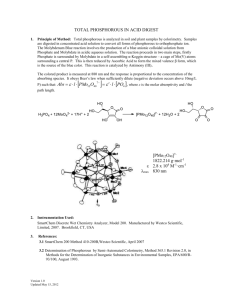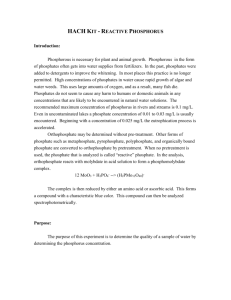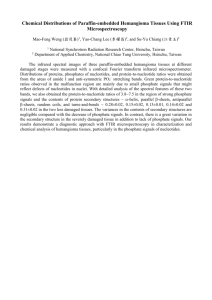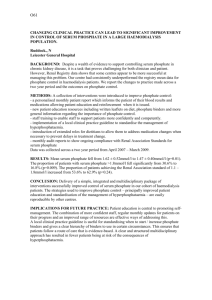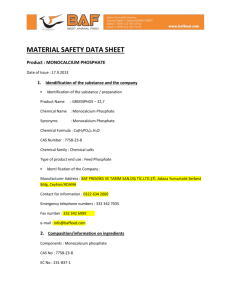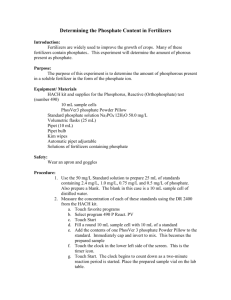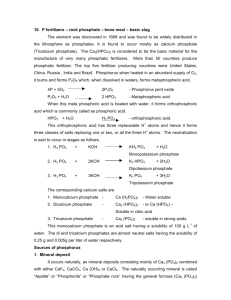strategies for the development of biophosphorus fertilizer systems
advertisement
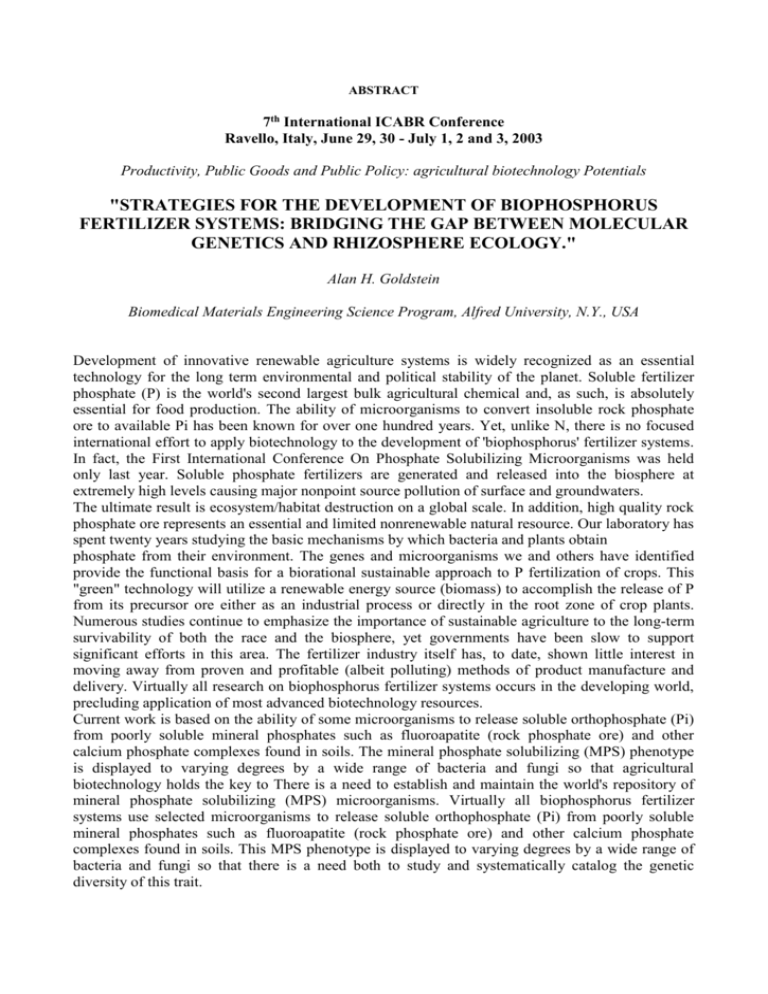
ABSTRACT 7th International ICABR Conference Ravello, Italy, June 29, 30 - July 1, 2 and 3, 2003 Productivity, Public Goods and Public Policy: agricultural biotechnology Potentials "STRATEGIES FOR THE DEVELOPMENT OF BIOPHOSPHORUS FERTILIZER SYSTEMS: BRIDGING THE GAP BETWEEN MOLECULAR GENETICS AND RHIZOSPHERE ECOLOGY." Alan H. Goldstein Biomedical Materials Engineering Science Program, Alfred University, N.Y., USA Development of innovative renewable agriculture systems is widely recognized as an essential technology for the long term environmental and political stability of the planet. Soluble fertilizer phosphate (P) is the world's second largest bulk agricultural chemical and, as such, is absolutely essential for food production. The ability of microorganisms to convert insoluble rock phosphate ore to available Pi has been known for over one hundred years. Yet, unlike N, there is no focused international effort to apply biotechnology to the development of 'biophosphorus' fertilizer systems. In fact, the First International Conference On Phosphate Solubilizing Microorganisms was held only last year. Soluble phosphate fertilizers are generated and released into the biosphere at extremely high levels causing major nonpoint source pollution of surface and groundwaters. The ultimate result is ecosystem/habitat destruction on a global scale. In addition, high quality rock phosphate ore represents an essential and limited nonrenewable natural resource. Our laboratory has spent twenty years studying the basic mechanisms by which bacteria and plants obtain phosphate from their environment. The genes and microorganisms we and others have identified provide the functional basis for a biorational sustainable approach to P fertilization of crops. This "green" technology will utilize a renewable energy source (biomass) to accomplish the release of P from its precursor ore either as an industrial process or directly in the root zone of crop plants. Numerous studies continue to emphasize the importance of sustainable agriculture to the long-term survivability of both the race and the biosphere, yet governments have been slow to support significant efforts in this area. The fertilizer industry itself has, to date, shown little interest in moving away from proven and profitable (albeit polluting) methods of product manufacture and delivery. Virtually all research on biophosphorus fertilizer systems occurs in the developing world, precluding application of most advanced biotechnology resources. Current work is based on the ability of some microorganisms to release soluble orthophosphate (Pi) from poorly soluble mineral phosphates such as fluoroapatite (rock phosphate ore) and other calcium phosphate complexes found in soils. The mineral phosphate solubilizing (MPS) phenotype is displayed to varying degrees by a wide range of bacteria and fungi so that agricultural biotechnology holds the key to There is a need to establish and maintain the world's repository of mineral phosphate solubilizing (MPS) microorganisms. Virtually all biophosphorus fertilizer systems use selected microorganisms to release soluble orthophosphate (Pi) from poorly soluble mineral phosphates such as fluoroapatite (rock phosphate ore) and other calcium phosphate complexes found in soils. This MPS phenotype is displayed to varying degrees by a wide range of bacteria and fungi so that there is a need both to study and systematically catalog the genetic diversity of this trait.
